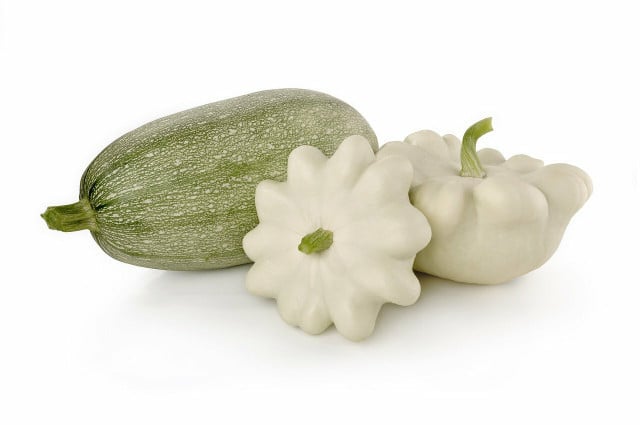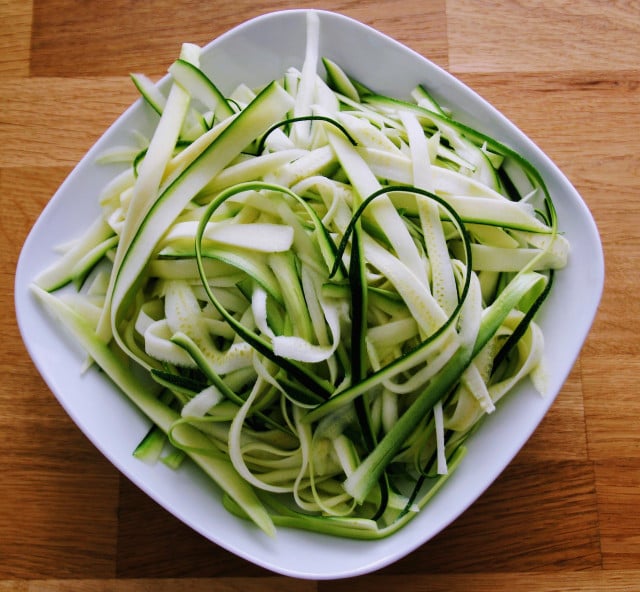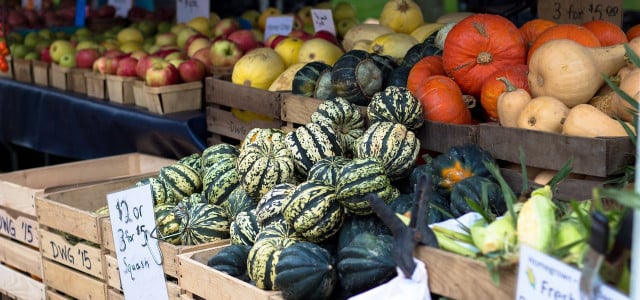Did you know you can eat many types of squash raw? With so many varieties of this seasonal favorite, it can be difficult finding the best and tastiest one. Here we will cover some of the best squash that are delicious when eaten raw.
There are two types of squash: summer squash and winter squash. Summer squash are sometimes called soft shell squash and can be eaten raw. Winter varieties like butternut and acorn squash have to cook for a long time and usually need their tough skin and hard seeds removed before eating.
For most summer squash, however, everything’s edible – the skin, seeds, and flesh. Despite the name, summer squash varieties are available most of the year. They will spoil quickly, so eating them soon after buying them will avoid unwanted food waste. They are incredibly nutritious and versatile and can be eaten as a main course or side dish. Summer squash is a fantastic raw ingredient that will complement virtually any style of dish you can think of.
Types of Summer Squash You Can Eat Raw

(Foto: CC0 / Pixabay / Larisa-K)
- Zucchini is by far the most popular summer squash out there. While it’s commonly served cooked, many people enjoy eating zucchini raw too. It works great in salads, with dips, in a wrap, or even spiralized to make noodles (“zoodles”). Zucchini is packed with nutrients and positive health benefits. From promoting healthy digestion and weight loss to improving heart health and blood sugar levels, zucchini should be a mainstay in any kitchen.
- As the name suggests, Yellow Crookneck or Straightneck has yellow skin and flesh and is also a tasty raw ingredient. Just keep in mind that the smaller the squash, the less bitter and the sweeter it will taste so it can be used in both savory and sweet dishes. Like zucchini, it takes no time to prepare, just slice or dice and throw it into your chosen meal. Yellow Crookneck is full of vitamins A, B, and C as well as good amounts of fiber, magnesium, potassium, iron, and folate making it one summer squash you’ll want to stop passing over.
- Patty Pan or Scallop is yellow or greenish-white in color. The inside is white and juicy. Young Patty Pan squash can be eaten raw, cut into thin strips, and added to a salad or main dish. Like its summer squash cousins, Patty Pan is packed with vitamins and fiber that can aid in regulating blood sugar levels and healthy digestion and has also been touted as a good way to promote heart health and weight loss.
How to Choose the Perfect Summer Squash
Especially if you’re planning to eat your squash raw, you’ll want to keep an eye out for firm, vibrantly colored squash. A few nicks and scratches on a squash’s thin skin are to be expected but try to avoid wrinkly skin, which is a clear sign of age, or soft and wet spots, which usually indicate rot.
If you only want to eat raw squash, it is best to pick out small to medium-sized squash, no bigger than 8 inches long (or 4 inches across for Patty Pan squash). Baby summer squash, just 1 to 2 inches long, are tender and sweet, whereas very large, overgrown squash may be coarse or stringy inside and have large seeds. These are usually much better for soups or stews rather than raw dishes.
Another good tip is to choose squash that is firm and feels quite heavy for its size. If it feels a little lighter it may be because it is dry and cotton-like inside. Ideally, the skin should be evenly colored and slightly shiny and the stem end should appear fresh and green.
How to Use Raw Summer Squash in Recipes



(Foto: CC0 / Pixabay / Peggy_Marco)
Firstly you will need to wash your squash thoroughly if you are intending to eat it raw. Remove the ends before peeling or slicing as preferred. Most of the time, a good summer squash does not need to be peeled or seeded, unless it is oversized or has thick skin.
Squash has a mild flavor so you may want to experiment a little by adding sweet spices like cinnamon, ginger, nutmeg, and cloves, or try more hearty flavors like basil, garlic, mustard, and rosemary.
Summer squash can be used in many different ways, depending on how it is cut. Thin strips work well for a raw vegetable tray for instance. Sliced half-circles or grated squash can be added to salads, slaw, spaghetti sauce, or muffins, and quick bread batters (like this one-hour spelt bread recipe). Squash and zucchini can also be processed in a spiralizer, either handheld or manual, to make vegetable noodles.
How to Store Your Raw Squash
Unlike their winter counterparts that can keep for months in ideal conditions, summer squash need to be stored in a cool dry place, ideally in the refrigerator. Place them inside a plastic container as this will retain their freshness and be sure to use your squash within a week before they start to spoil. You can also consider freezing your summer squash. This will take a little bit more preparation but it will be worth the extra effort.
Read more:
- Oven Roasted Butternut Squash: How to Make From 5 Ingredients
- Can You Eat Pumpkin Skin? Hokkaido, Butternut Squash, and More
- Raw Vegan Diet: Risks, Benefits, and Easy Recipes
- How To Make the Best Winter Squash Soup With Any Squash
Do you like this post?







